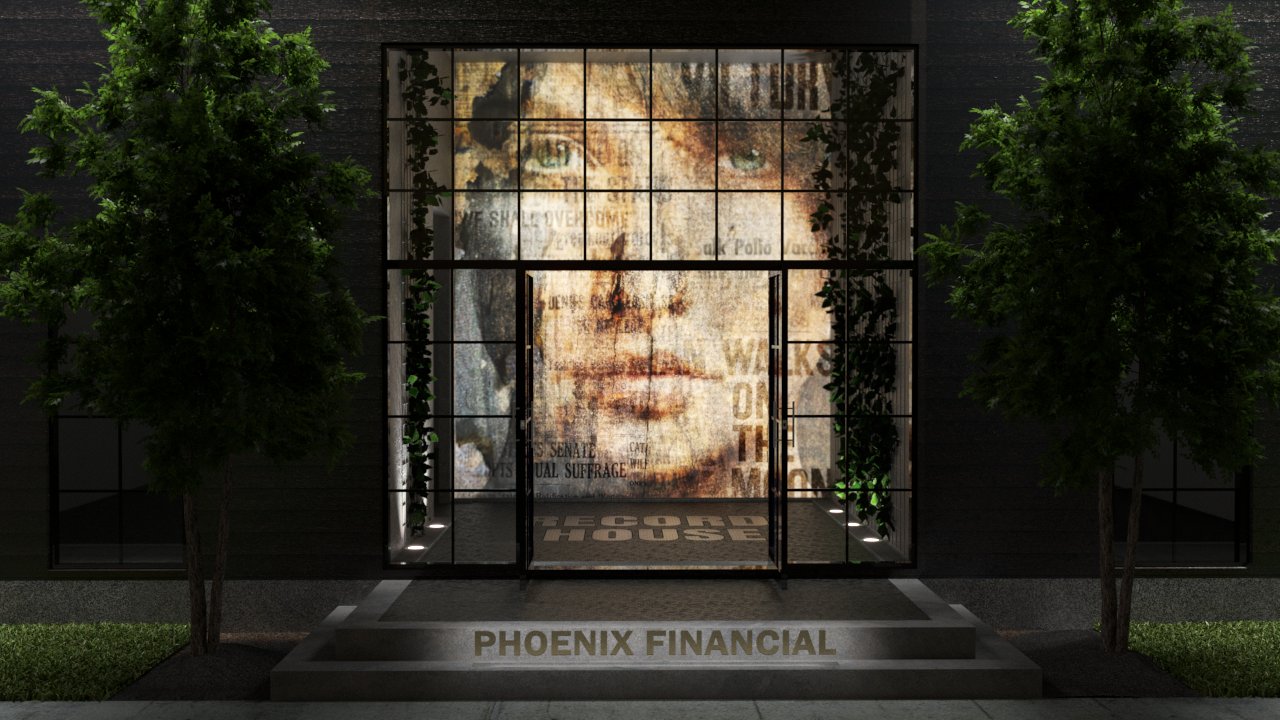The Record was a New England county newspaper from 1989 until it closed its doors in 2020. Its headquarters were housed in a previous residence.
The concept for this re-design merges the house-turned-office aesthetic with the grandeur of high-end urban commercial properties.
More is the New Enough
Small businesses often limit their design investment to the pleasant functionality of well-wearing carpets and work-spaces. But how a business aesthetically presents itself can set that business apart. From moment one, it has the power to color perception and promote trust and confidence.
There's great power in juxtaposition. The thought here is to pair an inquisitive and inspirational aesthetic with a small and traditional investment operation.

An Uplifting Entrance
Conceptually, this is not a room for waiting, but rather for entering. One that serves as separation from the outside world and the place of business inside. An entry that sets a tone. An overture. A space that lifts one up. The vines, art, light, and visitor's perception of this place—(this business)—all rise.
Think of it this way. Food tastes better when well-plated. We correctly believe our dish has had extra attention paid it. And we correctly believe that the kitchen wants to please us. In turn, we want to enjoy this meal. And we’re far more likely to.
Before pictures of the facade and foyer:

Recording Roots
The publication produced here was The Record. The design renames this structure the Record House to honor its contributions.

Past: Meet Present. Present: Meet Past.
The bespoke art-wall reflects the home's journalistic history. It remembers progress through the eyes of a collective mankind.
The materials and textures—stone, plaster, vine alongside metallics and led-lit glass—merge past, present and future. Old world lives alongside the new.
History informs decisions and movement. This aligns well to the goals of an investment firm which looks to past trends with an eye to the future.
"Before we acquire great power we must acquire wisdom to use it well." Ralph Waldo Emerson

This is, of course, subtext. What one sees and acknowledges is very different from what one actually perceives and what one actually feels. These are the things we can’t easily explain. And this is the power of design.




